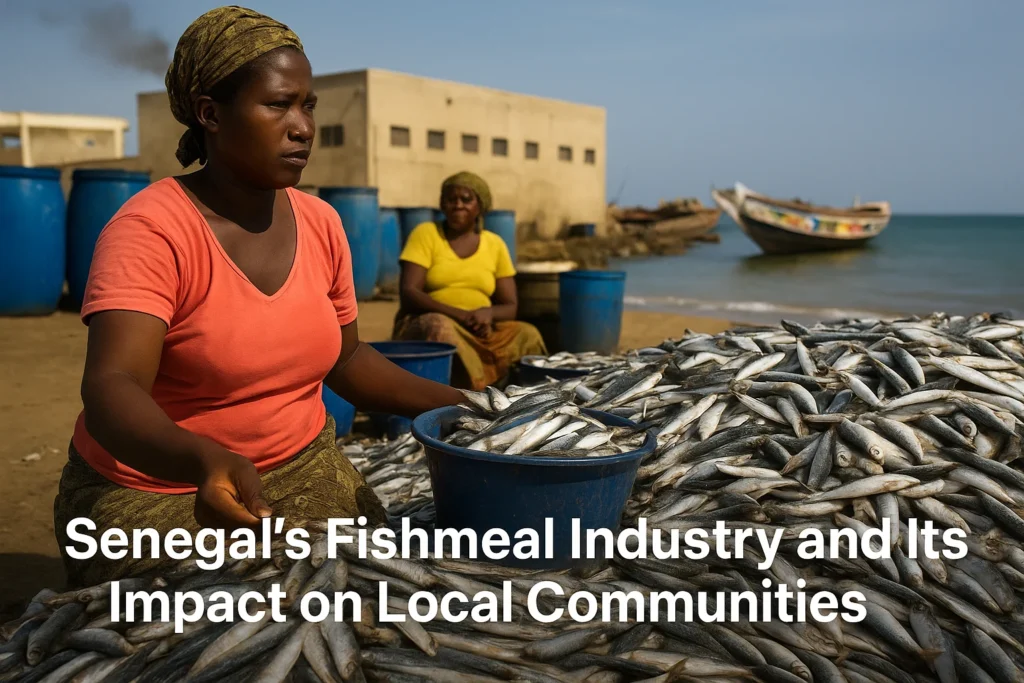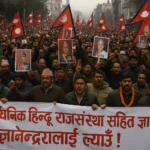The Atlantic waves crashed against Fatou Ndiaye’s weathered pirogue as she hauled in her net at dawn. Where generations of Senegalese fishers once found abundance, her hands now grasped at emptiness – just a few struggling sardinella flopped amid the mesh. On shore, the belching smokestacks of fishmeal factories loomed, processing tons of the same small fish that once fed her village into powder for foreign fish farms.
This is the untold story behind your farmed salmon dinner – a tale of ecological plunder, corporate greed, and communities caught in the nets of global trade.
Chapter 1: The Industrialization of a Traditional Resource
From Local Staple to Global Commodity
For centuries, sardinella (known locally as “yaboy”) formed the backbone of:
- Nutrition: Providing 70% of animal protein in coastal Senegal
- Economy: Supporting 600,000 artisanal fishers
- Culture: Central to dishes like thieboudienne (national fish and rice dish)
The shift began in the 1990s when:
- EU fishing agreements depleted high-value species
- Chinese-built factories appeared along the coast
- Global aquaculture boom created insatiable demand for fishmeal
The Fishmeal Production Chain
- Industrial Trawlers: Scoop up entire shoals near breeding grounds
- Processing Plants: 24/7 operations consuming 500,000 tons annually
- Export Routes:
- 60% to Turkey (for farmed sea bass)
- 25% to China (for tilapia/pork feed)
- 15% to Europe (salmon farms)
“They take fish that could feed 40 million Africans to fatten fish for Europeans.”
— Dr. Ibrahima Cissé, Greenpeace Africa
Chapter 2: The Devastating Impacts
Nutritional Crisis
- 75% reduction in fish available locally since 2010 (FAO data)
- Child malnutrition rates up 18% in fishing communities
- Price inflation: 1kg of fish now costs 35% of daily wages
Economic Paradox
| Artisanal Fishing | Fishmeal Industry | |
|---|---|---|
| Jobs Created | 1 ton = 3 livelihoods | 1 ton = 0.2 jobs |
| Wages | $5-10/day | $1.50-3/day |
| Value Retention | 90% local | <15% local |
Ecological Disaster
- Juvenile bycatch: Up to 50% of processed fish are immature
- Dead zones: Nutrient runoff creates algal blooms
- CO2 emissions: Each ton of fishmeal produces 2.3 tons carbon
Chapter 3: Voices From the Crisis
The Fisherman’s Lament
“My grandfather taught me to throw back small fish. Now the factories take everything – even the babies that could rebuild stocks.”
— Ousmane Diop, 3rd-generation fisher
Inside the Processing Plants
Worker testimonies reveal:
- 12-hour shifts with no protective gear
- Respiratory illnesses from constant dust inhalation
- Wage theft through “production bonus” scams
Women Bear the Brunt
With less fish to process:
- Income drops 60% for female fish smokers
- Domestic tensions rise as food budgets shrink
- Girls increasingly pulled from school to help families
Chapter 4: The Global Web of Responsibility
Corporate Players
- Norwegian salmon farms: Biggest EU importers
- Chinese feed companies: Own 80% of Senegalese plants
- European supermarkets: Sell the end products
Policy Failures
- Weak quotas: Allow fishing during spawning seasons
- Tax breaks: Factories pay minimal export duties
- Labor violations: No inspections at processing plants
Chapter 5: Pathways to Justice
Grassroots Resistance
- Fishing bans: Saint-Louis communities block trawlers
- Alternative livelihoods: Seaweed farming initiatives
- Women’s collectives: Developing plant-based fish substitutes
Policy Solutions
- Moratoriums: Following Mauritania’s 50% reduction model
- Local processing: Incentivizing value-added products
- Import regulations: EU considering fishmeal sustainability criteria
“We don’t want aid – we want our fish back.”
— Arame Tall, Women’s Fish Processing Collective
Epilogue: The Tipping Point
As climate change warms West African waters, sardinella stocks face collapse by 2035 if current trends continue. The choice is stark: sustain foreign aquaculture or preserve African food sovereignty.
Can global trade ever be truly equitable? Share your thoughts below. 🌍🐟



